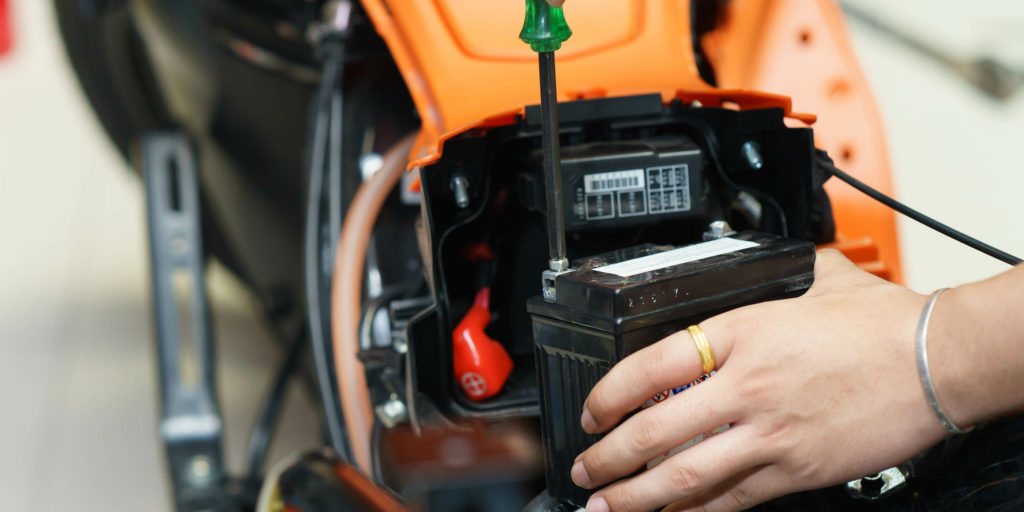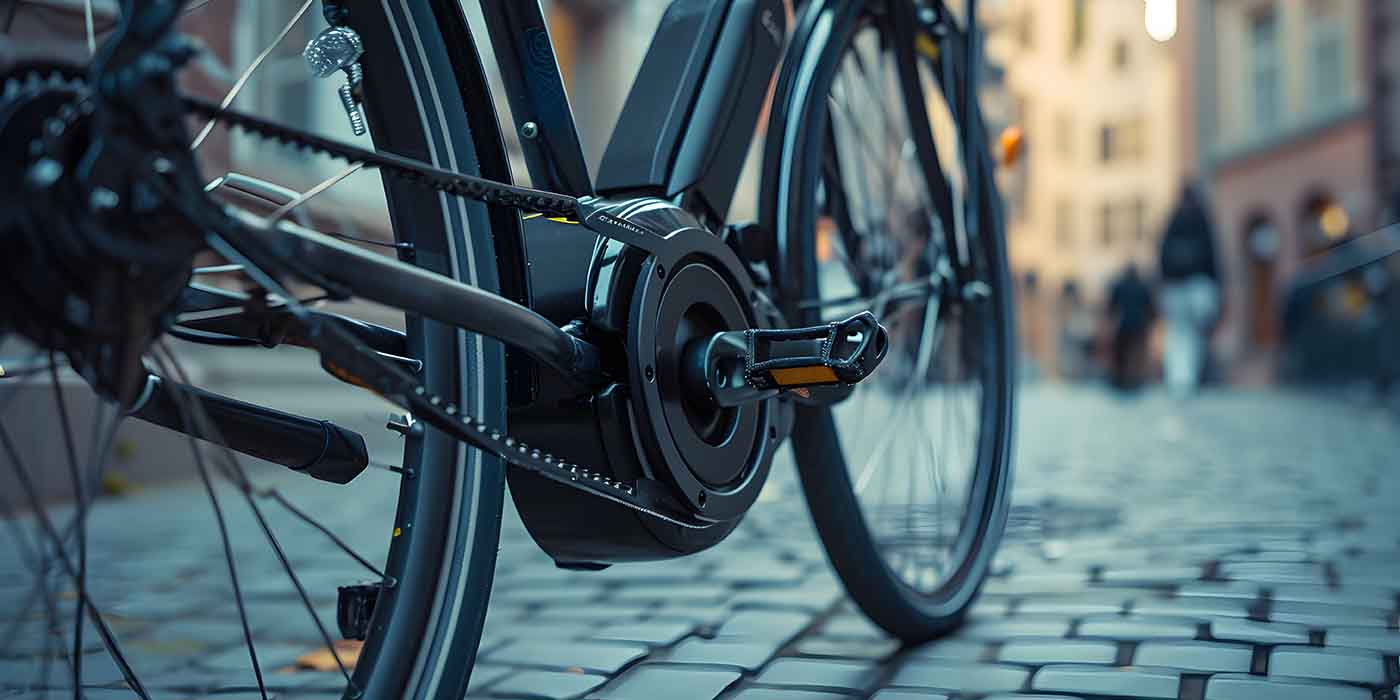Batteries provide the essential power and energy to start powersports vehicles and the balance of electrical loads from accessories like lighting, winches and entertainment systems. It’s an often overlooked component of the vehicle’s electrical system, but is vital to its operation. A powersports battery must be able to withstand extreme temperatures, take harsh vibration and impacts and be non-spillable if the vehicle turns on its side.
So, how does a powersports battery work and why are certain electro-chemistries better for one vehicle than another, such as a road racing motorcycle versus a Utility Task Vehicle? Over the years, technological advancements in materials and construction of the battery’s components have led to more reliable, durable and powerful performance for powersports applications. The history of the powersports battery’s development is a perpetual search for more power and energy in a smaller footprint, while also extending life and increasing resistance to harsh conditions, which has resulted in today’s leading battery chemistries, constructions and features.
The Rise of the Powersports Battery
Until the 1960s, there were virtually no batteries for powersports applications. Except for the largest displacement motorcycles, most bikes started with a kick and did not need a battery to run. All-Terrain Vehicles and UTVs were not introduced until the 1970s[1]. Since then, there has been a huge expansion of battery applications for a wide range of powersports: motorcycles, ATV/UTVs and snowmobiles, among others. Although they all have varying application needs, they all share the need for dependable, compact and reliable power.
Simply put, batteries are vessels for storing and supplying electrical energy. For more than 100 years conventional lead acid batteries have offered the required power and generally reliable performance for automotive applications at a reasonable cost. Sometimes referred to as Starting, Lighting and Ignition (SLI) batteries, they work by converting chemical energy to electrical energy. Each single cell within a battery consists of a number of plates, or electrodes, surrounded by electrolyte. When charging or discharging, ions (atoms with a positive or negative charge) react with the electrolyte and material on the electrodes to create free electrons. The electrons transfer through the circuit connected to the battery to generate or absorb energy.
The electrodes featured in a conventional lead acid battery are produced from lead alloy plates (the conductors) and lead oxides (the active material), while the liquid electrolyte is sulfuric acid. The chemical reaction derived from a battery discharging causes the acid to reduce its concentration, while charging refurbishes the original electrolyte concentration. As charging occurs, water in the electrolyte breaks down into oxygen and hydrogen that is generated at the plate surface and in flooded batteries is vented to the atmosphere. In sealed batteries, the hydrogen and oxygen will remain in the battery and will eventually recombine to form water. A single cell nominally generates two volts of electricity, and six cells are connected in a series to make a 12-volt battery.
Most of the conventional lead acid batteries on the market today are made of recycled lead[2]. Lead is too soft to support itself, so calcium is added to give the plates the needed firmness to perform. These two dissimilar metals can generate galvanic corrosion, which causes the plates to actually consume themselves as the battery sits. In the short term, this increases the self-discharge rate. If the battery sits without use for too long, the open circuit voltage will drop to very low levels and damage the internal lead plates. This is why it is important to always keep conventional lead acid batteries above a 50 percent State of Charge (SOC). In the long term, this corrosion results in a loss of conductivity of the electrode, reduced performance and ultimately total failure. In order to extend the battery life, lead calcium designs must employ thick electrodes to allow more corrosion before failure. Thinner grids in lead-calcium batteries lead to shorter life.
Although the basic chemistry of lead acid batteries has remained more or less the same, advances in materials and construction have resulted in a number of enhanced designs. For instance, deep cycle batteries are another type of conventional lead acid battery, but the internal configuration of the plates is much different to allow for deeper duty cycles. Unlike SLI batteries, which require recharging even after very shallow discharges, deep cycle batteries can be slowly discharged to a safe level before recharging is needed[3].
Today’s Advanced Absorbed Glass Mat (AGM) Battery
An alternative lead acid battery construction that came to market in the mid-1970s is the Absorbed Glass Mat (AGM) battery, a virtually maintenance-free energy storage solution with premium charging capabilities. Unlike conventional lead acid batteries, an AGM battery contains a fiberglass separator that is placed between each plate to absorb the electrolyte. This makes the battery spill proof with no additional water or electrolyte ever required. Because the plates can be sealed tighter in the cell than conventional lead acid batteries, AGM batteries also offer better shock and vibration resistance. Additionally, AGM batteries are less prone to sulfation and can generally double the length between maintenance charges in storage versus conventional lead acid batteries.
The ODYSSEY Battery Solution
Furthering the strides made with AGM, advanced Thin Plate Pure Lead (TPPL) technology was developed to offer even more advantages to a range of applications. TPPL uses advanced engineering and manufacturing techniques, and premium materials to eliminate the use of calcium from the battery plates. Instead, engineered support and structure in the battery enables the elimination of the corrosive elements. TPPL construction additionally allows more plates to be used, resulting in more functional surface area. Increased surface area equates to significantly better power, even at low states of charge.
Premium AGM batteries, like ODYSSEY Extreme and ODYSSEY Performance batteries, are examples of TPPL batteries. ODYSSEY batteries self-discharge at much slower rates than conventional and even AGM batteries. This means an ODYSSEY battery has a shelf life of up to two years (or three times that of conventional batteries) before it needs to be recharged. Its rugged design provides additional protection against high-impact shock and vibration, two common causes of premature battery failure.
ODYSSEY batteries also have a high recharge efficiency and are capable of 100% recharge in very little time, as the internal resistance is very low to allow recharge with current up to 1C. TPPL batteries are designed for 400 charge/discharge cycles to 80% Depth of Discharge (DOD).
These state-of-the-art batteries perform well, regardless of the weather conditions. While all ODYSSEY batteries provide enormous cranking power at temperatures as low as -40°F (-40°C), ODYSSEY Performance batteries handle a range of temperatures up to 140°F (60°C). ODYSSEY Extreme batteries provide longer service life in high-heat applications, as it can tolerate temperatures as high as 176°F (80°C).
ODYSSEY dual purpose batteries also have excellent deep cycle reserve power which allows them to power accessories and systems when needed, such as winches, auxiliary lights, A/C compressors, navigation systems and start/stop systems. The batteries can also provide high engine cranking pulses of double to triple that of equally sized conventional lead acid batteries.
Final Thoughts
Today, powersports owners have a wide range of battery options, depending on their specific application. Premium AGM batteries with TPPL technology, like ODYSSEY batteries, offer many advantages to handle even the toughest vehicle demands.
Link: EnerSys
[1] Live Outdoors, “The History of the ATV,” 2019. Accessed on July 15, 2019. https://www.liveoutdoors.com/motorsports/166269-the-history-of-the-atv/
[2] World Health Organization, “Recycling used lead-acid batteries: health consideration,” 2017, p. 6. Accessed on May 21, 2019. https://apps.who.int/iris/bitstream/handle/10665/259447/9789241512855-eng.pdf;jsessionid=31BA0C2315056E7B2AC8BF94409ACCBD?sequence=1
[3] Laukkonen, Jeremy. “The Science of Automotive Battery Technology,” Lifewire. Published on March 22, 2019 and accessed online on May 21, 2019. https://www.lifewire.com/science-of-automotive-battery-tech-534784














